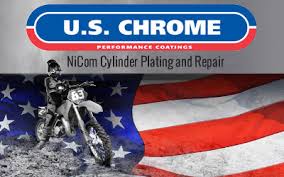motorcycle cylinder repair las vegas

Ktm big bore kits for four stroke, and two stroke motorcycles. Suzuki big bore kits for four stroke, and two stroke motorcycles, and atv's. Honda big bore kits for four stroke, and two stroke motorcycles. Kawasaki big bore kits for four stroke, and two stroke motorcycles. Yamaha big bore kits for four stroke, and two stroke motorcycles. Cylinder Sleeving for four stroke, and two stroke motorcycles, and atv's. Nikasil Cylinder Repair, Re-Nikasil and Cylinder platingShop now! Motorcycle and ATV Crankshaft RebuildingShop now!Welcome to Main Street Moto and Las Vegas Dyno Tech. We are a boutique motorcycle dealership located in Las Vegas, NV. We work with all makes and models of motorcycles, including Sportbikes, Harleys, Race Bikes, ATV & Dirt Bikes - even Vintage Bikes and Scooters. As an independent, family-owned shop, we stand behind our work and provide a level of personalized service you won't find at large dealerships. Our new shop is now open and is conveniently located in downtown Las Vegas, NV.

The new location is called Main Street Moto offering Motorcycles, Parts and Accessories, and Riding Gear. You can expect the same level of quality Motorcycle Service and Dyno Tuning that Las Vegas Dyno Tech has built its reputation on.
motorcycle tires manchester nh Our friendly and knowledgeable staff is happy to help you find either the perfect bike or the parts you've been looking for.
red wing boots moscow idBrowse our catalogs, shop by fitment or request parts to see what we offer.
motorcycle parts littleton coIf you need help in making your selection, call or stop in—we're always ready to help!
used motorcycles for sale near dalton ga
From the minute you walk through the door, meeting your needs is our top priority. Call or stop by; you'll be glad you did.The requested URL /serviceInfo.php?id=1 was not found on this server. The N100 Plan was the corporate code name for the top secret concept, engineering, and development of an entirely new motorcycle engine by Kawasaki Motorcycle Corporation, a division of Kawasaki Heavy Industries in 1966.
texas rangers motorcycle helmet The goal of Kawasaki engineering in the N100 Plan was to create a large bore, fast motorcycle engine for entry into the American market, the largest market for motorcycles.
motorcycle dealership near amsterdam nyHonda had already introduced its successful Honda CB450 in 1965 and Kawasaki desired to enter that large bore niche.
mini bagger motorcycle for sale
The N100 Plan called for an air-cooled standard motorcycle with an engine capacity of 500 cubic centimeters. The power output was set at no less than 60ps (equivalent to a per liter horsepower of 120ps). The performance minimum was to make a 13-second standing start 1/4 mile run (0–400 meters). The Kawasaki engineers approached the N100 Plan in two ways. (1) Use an existing, tried and true Kawasaki A7 350 "Avenger", a 350 cc two-stroke, parallel twin-cylinder, rotary-disc engine, bored out to 500 cc or (2) develop an entirely new engineering layout, building a parallel 3-cylinder two-stroke or create a new and groundbreaking "L-triple" design air-cooled two-stroke engine. The development team decided to utilize both twin-cylinder and triple-cylinder engines together as test engines. The largest concern was development of the 3-cylinder design and whether it would be a parallel in-line or new "L-triple". The concern over the 3-cylinder design was cooling cylinders #2 or middle cylinder in either application.

Osaka University's laboratory belonging to the Faculty of Engineering performed a number of tests on cooling of the engine as a whole, optimum length of cooling fins, and optimum cylinder pitch. It was determined that a parallel in-line configuration would not impair cooling. While testing the 3-cylinder, Kawasaki also went forward with the development and testing of its current two-stroke twin-cylinder rotary disc valve engine. The preliminary test results pointed to a very promising outcome. One possible advancement in the twin over the triple was keeping the rotary disc valve fuel/air intake which produced more horsepower than the conventional piston port or reed valve means which has been the case in other Kawasakis. The Kawasaki technical team at the end decided on a more exotic looking, stunning, and innovative design of the three-cylinder piston inlet port engine. The initial part of the 2nd test of the N100, as recorded by Darrell Krause, was between Los Angeles and Las Vegas in late 1968 with the test rider Tony Nicosia.

A new engine was installed at Las Vegas and the bike was run to Yuma, Arizona under normal road conditions with a return trip to Los Angeles. Krause reported improvements at low speed, better electrical performance, and improved oil consumption @ 350 to 400 miles per quart. Problems were listed as bad piston and clutch noise. Testing in the U.S. was administered by Darrel Krause, one of the first few US employees hired under Yoji (George) Hamawaki. Krause majored in mechanical engineering from the South Dakota School of Mines & Technology. He had moved up through the ranks of Kawasaki from a Kawasaki/Suzuki dealer to become one of the first corporate employees of American Kawasaki known under the acronym then as AKMC. Krause's positions were Service Manager, Racing Manager, New Products Manager, General Manager of the Kawasaki Engine Division, and General Manager of Kawasaki Accessories Division located in Santa Monica, California.[5] One of the his first duties in 1966 was to commission a U.S. marketing plan for Kawasaki.